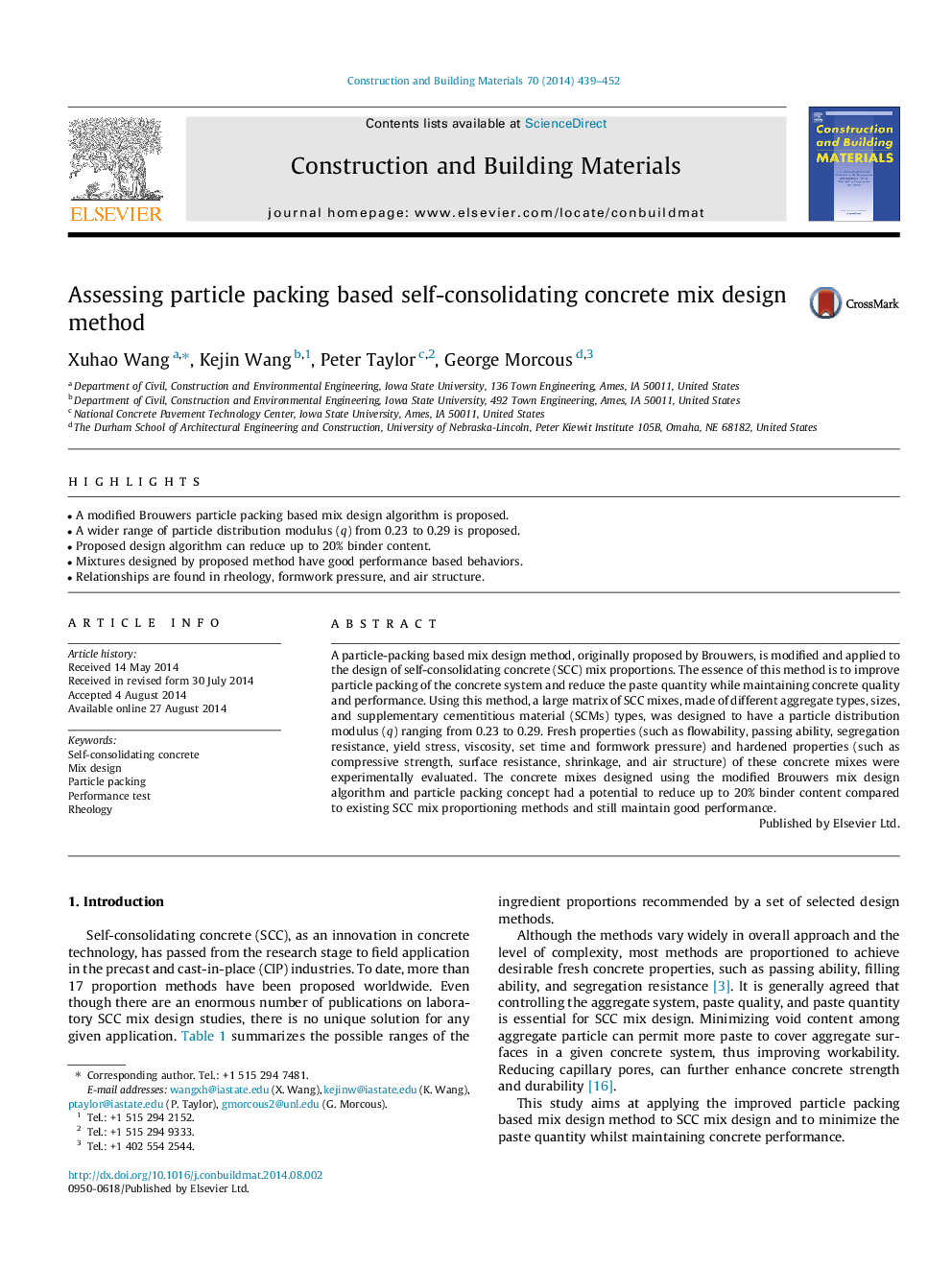| Article ID | Journal | Published Year | Pages | File Type |
|---|---|---|---|---|
| 257375 | Construction and Building Materials | 2014 | 14 Pages |
•A modified Brouwers particle packing based mix design algorithm is proposed.•A wider range of particle distribution modulus (q) from 0.23 to 0.29 is proposed.•Proposed design algorithm can reduce up to 20% binder content.•Mixtures designed by proposed method have good performance based behaviors.•Relationships are found in rheology, formwork pressure, and air structure.
A particle-packing based mix design method, originally proposed by Brouwers, is modified and applied to the design of self-consolidating concrete (SCC) mix proportions. The essence of this method is to improve particle packing of the concrete system and reduce the paste quantity while maintaining concrete quality and performance. Using this method, a large matrix of SCC mixes, made of different aggregate types, sizes, and supplementary cementitious material (SCMs) types, was designed to have a particle distribution modulus (q) ranging from 0.23 to 0.29. Fresh properties (such as flowability, passing ability, segregation resistance, yield stress, viscosity, set time and formwork pressure) and hardened properties (such as compressive strength, surface resistance, shrinkage, and air structure) of these concrete mixes were experimentally evaluated. The concrete mixes designed using the modified Brouwers mix design algorithm and particle packing concept had a potential to reduce up to 20% binder content compared to existing SCC mix proportioning methods and still maintain good performance.
